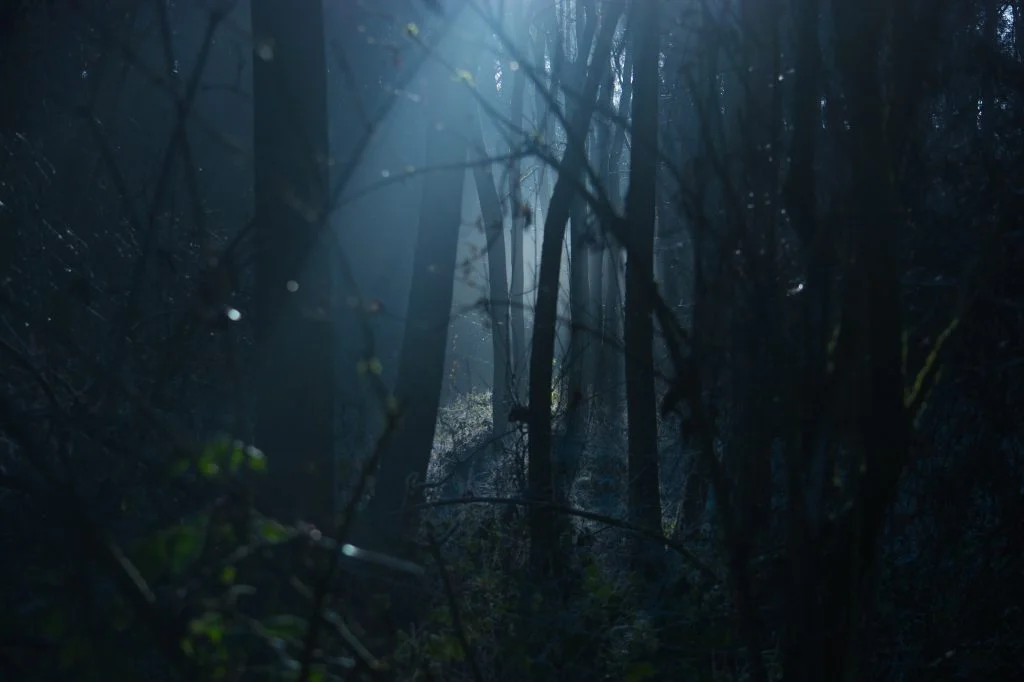A year’s journey celebrating and marking the Celtic festivals and learning from the magic at Hazel Hill Wood.
Background
For over two decades we have been listening deeply to the rhythms and the heartbeat of Hazel Hill Wood, celebrating ancient traditional festivals which mark the rhythm of the Wheel of the Year. I’d like to express my deep appreciation and gratitude to Agatha Manouche, a medicine woman with huge commitment, wisdom and insight: Agatha is the main author of this work. Heartfelt appreciation also to Alan Heeks, my friend, and founder and chairman of Hazel Hill Wood: Alan’s been deeply committed to this work and the wood for over 30 years.
The Celtic Festivals. The purpose of sharing this paper is to provide one framework (there are many) which gives an approach to living with the heartbeat of the land, following the dance of the Earth around the Sun which has been celebrated since prehistoric times, marking the seasons on our land. You can follow these eight festivals like an unfolding journey of manifesting your yearly dream.
So, we start with…
Winter Solstice: sometimes also known as ‘Yule’
On December 21st, the sun reaches its furthest point in the Southern hemisphere; there it pauses on its course before it starts moving Northward again. This pause is called "solstice" from the Latin words "sol" meaning sun, and "sisto" meaning stop.
Like the tide at the point it’s neither in nor out, there’s these moments for a few days around the Solstice when the sun doesn’t move. For us humans this time calls for stillness, as we observe and experience nature hibernating. To reach this state, we consciously aim to slow down our human activities from the previous festival (Samhain) throughout the Autumn months. Invited by the natural rhythm of the wood which seems to be falling asleep, by the winter solstice, we’ve watched the leaves steadily fall and slowly dissolve into the ground, as the rain and the cold settle, and the days become shorter.
Symbolically, during this period, we’ve looked within and attempted to let go of what’s no longer serving us: attachments to old habits, patterns of behaviour, grudges etc. So when Solstice arrives, there’s a sense of a turning point. We’ve come to a place called the Static Feminine: apparently we’re doing very little outwardly, yet we’re restoring the vital nutrients provided by our inner process to prepare for the New Year, the New Dream.
As people have done for millenia on this Earth, at Hazel Hill Wood we call the Sun back to our Land with celebrations of songs and dances and prepare to receive the New Seed of the New Dream - a journey that will unfold through the year to come.
Imbolc: 2nd February, also called Candlemas
Half way between Winter and Spring, Imbolc is the time when we begin to witness glimpses of the return of the Sun. Like Candlemas (feast of candles), Imbolc invokes the return of the light. “Imbolg” meaning “in the belly”, marks the beginning of the lambing season, new life, new milk, new beginnings. It’s time to celebrate fertility. Brigid, an old Celtic goddess related to fire and fertility was traditionally invoked to fortify the fertility in the land. The first shoots and sometimes even early flowers begin to appear, celandines and primrose, snow drops. In the journey of the Dream of the year, they represent the first manifestation of the seeds received from the blessings at Winter Solstice.
In your thoughts or prayers you can hold that the seed of the new Dream be fertilised by the light and the Fire of the returning Sun. Like the rest of Nature around us, we emerge slowly from our hibernation; we move from the Static Feminine mode to the Dynamic Masculine one - a more focused and active way of being. The emerging light activates our own shoots and, if we pay attention, we may feel a new focus emerging in our life; something of the New Dream we called for at Solstice. We gather to re-kindle with the New Light, calling for the inner and outer process of thawing which will allow renewal to emerge. It’s a great time to plant a new tree to give root to the New.
Spring Equinox: sometimes known as Ostara
On 21 March, Spring Equinox marks the time when the Sun is reaching the Equator, stepping back into our hemisphere; the days and nights are equal. And to honour that, we check-in with what’s in and out of balance. We assess whether there’s too much of one thing or not enough of another; perhaps too much activity or inactivity in the symbolic journey of manifesting the Dream of the year.
Equinox is also a place where we look at situations in our life that may have become polarised into inner or outer conflict. This quest for balance is also a quest for harmony; nature gives us plenty of examples how apparently competing species, e.g. of trees, can reach a balance.
Beltane: 1st May
Beltane brings together many different threads, as we continue to follow the journey of the Dream of the year and listen to the heartbeat of the land. Many plants have flowered and Hazel Hill Wood sees the magical purple-blue from the Bluebells! This is the time of witnessing Birth everywhere - Beltane is an explosion of vitality and lushness: baby owls hoot and the fowls dance, the woodpecker sounds his rhythmic beat; birdsong becomes a magical chorus and the panoply of flowers explodes as we leap between the ritual fires of the Sacred Masculine and Feminine in the Celtic tradition.
Like the symbol of the Easter egg hatching, we witness the hatching of our year’s Dream, asserting our intention and commitment in the spirit of joyous celebration.
Summer Solstice: 21st June, sometimes known as ‘Litha’
As the Sun grows higher on our horizons, between Beltane and the Summer Solstice it’s the final stages and opportunity for nurturing and supporting the evolution of that Dream of the year we’ve carried forth to its fullness. Summer Solstice is the longest day and shortest night of the year. As we reach the point of stillness, we look at our dream’s full potential, as well as its limitations. Hopefully we realise its purposeful manifestation and feel the difference it’s made in our lives and possibly that of others. Solstice also brings focus to the beginnings of a sense of “this is it”, and by Midsummers night we know that we’ve arrived at the turning point. For that long night the Sun stands still but as it starts its retreat to the South, the days begin to shorten. Nevertheless, the promise of the harvest is yet to come.
Lammas: 1st August, sometimes known as ‘Luchnassad’
Although imperceptibly the days become shorter, the sun is still high and strong, and it continues to help the fruits of our harvest ripen. The journey between Summer Solstice and Lammas is a time of embracing what has manifested but also a time for reflection, when we ask ourselves: “what has my Dream been about?”
It brings a sense of honouring of its gifts and limitations. Lammas has a quality of seeing things as they truly are and being open to learning from what’s happened thus far; this attending to our learning is vital so that our next Dream in the cycle becomes richer and more real.
This is a time of counting our blessings. Although the Sun is descending faster on its Southern journey, our Dream continues to bear its fruits. At the wood we notice the start of wilting as the leaves of many trees begin to turn to browns, golds and reds indicating the turn to Autumn. Great time to honour gifts, beauty and blessings.
Autumn Equinox 20-23 September, also known as ‘Mabon’
As we complete the last stages of our harvesting, and fruits and nuts ripen, we’re truly with the energy of thanksgiving for all that has come: celebrating the Earth’s unconditional abundance as well as our own achievements, acknowledging the blessings of food, friendships and our many communities and tribes we’re a part of.
Squirrels teach us about harvesting and storing in preparation for the winter, and the trees and plant kingdoms let their energy drop back into their roots. As the Sun crosses the Equator again, on its way back to the South, we take another opportunity to check what is in and/or out of Balance, it’s the beginning of Autumn; the light is fading and now growth either slows down or stops entirely.
We look at how we can best store and harvest for ourselves the lessons that came with the journey. It’s also a good time to release the past like the leaves that drop and become compost, bringing their richness and goodness into the ground of our being, our soil.
Before the days grow shorter we check again what’s in or out of balance, moving beyond old patterns that might have tended to polarity, and slowly we prepare ourselves for the descent into the dark.
Samhain: 31 October – 1 November
Half way between Autumn and Winter, the festival of Samhain marks the time when we begin the slowing down process. Like the leaves falling off the trees, we let go of whatever is no longer needed or helpful; as we look at the shape of the tree trunks devoid of their ornaments, we allow the Dream of the year to lose the illusion of its form, yet keeping its core essence. With the nights growing longer and the cold taking over, we learn from the creatures of the wood as they embark into their hibernation. Like them, we begin the descent into the dark cave of the Earth, where rest and decay transform into vital organic nurturing.
Samhain coincides with Halloween - the time when the veil between the world of the living and the world of spirit is at its thinnest and for many indigenous traditions this is the time when ancestors come to help us go down into our own ‘underworld’, to re-connect with our spirit, the Source of all Dreams. Samhain marks the end of the year’s cycle, and the necessary preparation for the beginning of the next. From here, we prepare ourselves for the renewal that Winter solstice will bring.
At Samhain we go underground, we adjust our pace and enter a deeper dreaming. We review the year that’s passed, and for better or for worse, we look at what’s worked and what hasn’t. We learn to see the essence of our Dream of the Year and let go any illusions we may be carrying. We discover how to bring our ancestors closer and connect with the ones that can help us manifest the cycle of transformation.
…and so we return to the winter solstice































